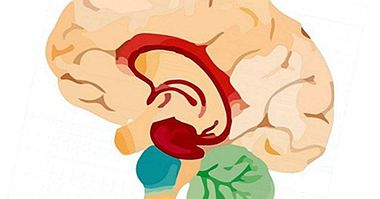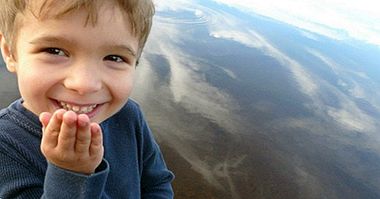Motion sickness (motion sickness): causes and remedies
In series and movies, or directly in real life, it is common to see how before a boat trip many people get dizzy and end up throwing up overboard.
It is also not uncommon to think of someone who gets dizzy on a car trip and needs to take some type of medicine or gum against seasickness. In both cases, we are facing an annoying problem called Motion sickness or motion sickness .
- Maybe you're interested: "Asthenia spring: causes, symptoms and remedies to combat it"
What is motion sickness?
Motion sickness, kinetic dizziness or motion sickness is a state of discomfort in the presence of movements acceleration or deceleration.
It is a very frequent phenomenon and that under certain conditions can appear in most of the population, not being something worrying or indicative of a serious problem. However, it is usually more frequent in women than in men, as well as in the population ranging from two to twenty years of age.
Symptoms of motion sickness
Motion sickness is characterized by the presence of Gastric changes such as nausea and vomiting along with sweating, hyperventilation, low tension, headache and feeling of daze and anguish. Afterwards, a great fatigue usually follows.
The discomfort typical of motion sickness usually occurs in situations in which we are moving in a vehicle. Although our body remains still inside it, it is in a constant movement that provokes a contradiction between our balance and our vision . It usually appears when we make a trip by car or boat (it also appears on planes and trains).
curiously it does not usually appear in transport methods like the subway , probably because the perception of external objects is much more limited when circumscribed to the tunnel in question. The presence of motion sickness in virtual reality environments has also been observed, because what we see and our position and balance are not coordinated.
Why is it produced?
Motion sickness is produced mainly by the presence of a mismatch between vestibular information from the inner and visual ear. While the first (which informs us of the position of the body with respect to the ground and allows us to maintain balance) detects that our body is immobile, our visual system reflects the opposite when observing that the environment moves at a great speed. This is especially visible when we try to read or fix the sight in something immobile in a vehicle whose movement is perceptible, at which time the discomfort may appear or accentuate.
Also, aspects such as the emotional state of the subject and the absence of good ventilation (Anyone who suffers from motion sickness or knows someone who does is often faced with the need to open the windows to circulate the air) can influence the presence or intensity of symptoms.
And how do we prevent it?
Motion sickness is a problem that It can be annoying when we should travel or transport us from one place to another in some type of vehicle. Concrete symptoms are difficult to treat once they have started, but they can be prevented by following different strategies.
1. Position
First, the position that we occupy in the vehicle It actively influences the suffering of the symptoms. The person who drives or those who take positions that allow us to focus attention on a fixed point where we do not perceive movement usually do not suffer from the effects of motion sickness. The same occurs when traveling in the direction of the direction of travel (see objects moving away from the tide more than the opposite), and when the subject is placed in the areas with the least amount of movement of the vehicle.
2. Ventilation
Ventilation is, as we have said, a relevant aspect. The perception of unpleasant odors it adds to the contradiction between vision and balance, generating a greater discomfort and gastrointestinal movement. Therefore, one way to prevent it is to place ourselves in an area with constant ventilation. Smoking can also be harmful, so it is recommended not to do it before or during the trip.
3. Ingestion and consumption of alcohol
Another aspect to prevent is excessive intake. It is recommended eat and drink in small quantities if then we are going to make a trip. However, eating too much or not eating can be harmful and cause a greater level of discomfort in the subject. The consumption of alcohol also aggravates the discomfort
4. Medication
Chew gum or consume anti-kinetic drugs such as the well-known Biodramina Before the trip, it is usually effective, although in the case of drugs, special caution must be taken since they tend to cause hypnotic-sedative effects that can alter perception and reflexes, so they should not be taken if driving.
5. Rest
Sleeping during the trip can be a strategy to avoid noticing the effects of motion sickness. And although we do not sleep it is advisable to close your eyes . Likewise, it is recommended to have rested correctly before starting the trip.
6. Vehicle control
The type of movements the vehicle makes is also important. Curves and sudden changes in direction or speed they can generate a higher level of discomfort or initiate symptoms, so that they could try to avoid themselves as much as possible.
7. Activities
Activities that fix the gaze on a specific element while noticing the movement of objects on the outside are contraindicated. For example, reading, sending text messages or watching TV or videos from your mobile phone can generate kinetic dizziness.
8. Habituation
In some cases in which people must by their profession submit to large accelerations that can cause dizziness It is very useful to perform tasks that allow habituation to these conditions.



















